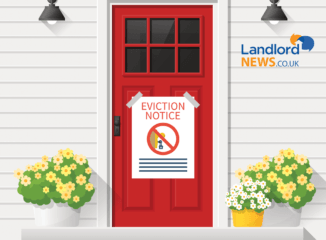Estate agent Barrows and Forrester has put together a list of home improvements for property owners that won’t require major renovations.
They say these tasks will generally take less than 34 hours to do, but point out it’s up to you whether to tackle them all at once or space it out over the month ahead. At any rate, this gives us plenty to get on with while England is in lockdown!
Here are the ten tips they’ve researched to get you started:
1. Silencing creaky floorboards – 30 minutes
Squeaky floorboards can be a real pain and it’s a job we often fail to tackle, accepting them as part of our property’s personality. They occur when floorboards either rub against each other or the sub-floor but can be easily rectified. Just take some talcum powder, soapstone powder or powdered graphite and sprinkle it between the cracks of the offending board or boards and this should do the trick.
2. Modernising your furniture – 40 minutes per item
Furniture can make or break the look of your house but a lick of paint really can work wonders. Particularly if it’s cheaper imitation wood finish. All you need to do is rub-down the surface and prepare it for painting, pick your preferred colour and get painting. It will take you roughly 40 minutes for an average piece of furniture but will save you a considerable amount against the cost of having it done professionally or picking out new pieces.
3. Fix squeaky hinges – 50 minutes
Like floorboards, a squeaky hinge can really get on your nerves. Grabbing some WD-40 and taking on every hinge in the house will take no more than 50 minutes and will prevent you from going mad. If you don’t have any to hand, olive oil or Vaseline also works perfectly.
4. Deep cleaning the bathroom – 60 minutes
No one wants to really do it and that’s the reason our bathrooms often fall into domestic disrepute. But with heavier footfall during lockdown, it’s the perfect time to tackle the job and should take no longer than an hour. Giving it a real deep clean with a good amount of elbow grease costs very little but it can also make a dramatic difference. With the extra time on your hands, go the extra mile and use a grout pen to give any tiled areas a showroom finish.
5. Perform a full safety check – 60 minutes
You should be staying on top of your property’s safety at numerous times throughout the year but when better than during lockdown. Create a list of all the devices in your home from electrical to other safety measures. These can include testing smoke, carbon monoxide, and burglar alarms and also checking that the locks on all doors and windows are all working correctly. Make a list of anything that isn’t working,
prioritise the task based on the level of danger it presents, and make sure you sort these jobs as soon as you can.
6. Paint a room – 1 hour 35 minutes
It’s one of the most cliché home improvements but like your furniture, a fresh coat of paint can transform any room. We often say we’re going to repaint a room and then neglect the task due to it being labour intensive, but if you plan to tackle it one room at a time it should take no longer than 20 minutes of prep time, 45 minutes for that first coat and a further half an hour to slap on a second.
7. Clean out your junk – 2 hours
We’re all guilty of hoarding some form of junk and you probably won’t realise until you have to live with it during lockdown for a month. Whether it’s old clothes, bric–à– brac, old furniture or anything in between, use this time to get rid. Not only will you have more space in your home and attic, in these tough times someone else might benefit from the things you want to get rid of. Double win.
8. Tackle your garden – 2 hours 30 minutes
Yep, the weather’s turning cold and the days are getting shorter and these aren’t the ideal conditions for garden work. But while you’re stuck at home make the most of the light and clean the patio, mow the lawn, clean, paint and repair your fence panels, trim the bushes, tackle the flower beds, tidy the shed and bring some life to your garden with some winter suitable plants. Not only will it be in a more manageable state come spring, but you’ll probably look forward to getting out of the cold and back on the sofa come the end of it.
9. Learn a new skill – 8 to 16 hours
Why not put your time to good use and learn something new that will also bring benefit to your home?
If your bathroom deep clean hasn’t cut the mustard you could try re-tiling it yourself. Start by attempting a small area that won’t require the full job to be done if you do give up and with the help of a tile cutter, spacers, grout, adhesive and a spreader, you could transform your bathroom for very little money. It will take around eight minutes to take on a small area so try it now and see how you get one.
10. Redecorate a room with wallpaper
Wallpaper is another challenge that many struggle with but once mastered it can be a great way to transform a room without opening a single pot of paint. The average room will take you a while though so it’s worth trying now while time is on your side.
James Forrester, Managing Director of Barrows and Forrester, comments: “A second stint of lockdown is the perfect opportunity to tackle some of the household jobs that you’ve probably been putting off. Yes, your property will benefit but you might be surprised how good it makes you feel and how much it helps you cope with a month of not very much else.
“By setting yourself daily or weekly goals, forming a plan and tackling them one job at a time, you can use your time for more than lounging around waiting for the world to reopen.“What’s more, if you’re currently selling then now is the ideal time to get your house in order.
“The current stamp duty holiday has caused a huge spike in buyer demand and as a result, homes are going under offer very quickly. So it’s better to get these improvements done and dusted now as they could well make the difference when it comes to securing a sale.”





